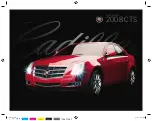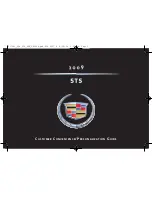
224
STARTING AND OPERATING
Airing Down For Off-Road Driving
Running lower tire pressure off-road can
improve your ride comfort and vehicle traction.
Reducing the tire air pressure allows the tire to
bulge slightly, improving its surface area for
better flotation and ability to mold or form to the
ground contour. Different terrain, tires, and
vehicles require different tire pressure. Hard
surfaces like rock and heavier vehicles require
higher pressures than softer surfaces such as
sand and lighter vehicles. You will need to
experiment to determine what is right for your
situation. It is easier and faster to let air out
than it is to replace it so, start high and lower it
as required. Remember you must return the
tires to normal air pressure before driving on
road or at highway conditions. Be sure you have
a way to return the tires to their normal on road
air pressure.
Vehicle Recovery
If you drive off-road, you may encounter a
situation where you will need to recover your
vehicle. Vehicle recovery should always be
given consideration before attempting a
questionable obstacle. You should never go
off-road driving without the ability to recover
your vehicle from a situation. Having another
vehicle with you usually works best for most
situations. The first thing to do is assess the
situation. Why are you stuck? Are you hung up
on something? Would it be easier to go forward
or to go backward? Can you still move the
vehicle? Is there an anchor point to winch to?
Are you alone or do you have another vehicle to
help? Is there high risk of vehicle damage
during the recovery process? Answering these
questions will help you determine the best
method of recovery. If you can still move the
vehicle slightly and the only issue is slick
ground, then rock cycling your vehicle would be
the first choice. If you have ample room, an
additional vehicle and there is low risk of
vehicle impingement on the surroundings, then
using a tow strap to the vehicle tow hooks would
be fast and easy. If the vehicle is severely hung
up or in a situation where great care needs to be
taken during the recovery, then nothing can do
the job better than a winch. If you are severely
hung up on something you should jack the
vehicle up and stack something under the
wheels to allow the vehicle to roll off the object
without causing further damage. This should be
tried before attempting any recovery method.
Rock Cycling Your Vehicle – Rock cycling your
vehicle is one of the easiest, fastest and
most commonly used methods. This simply
involves shifting your vehicle from DRIVE to
REVERSE, while applying throttle after each
shift. During this process, for additional trac
-
tion, try turning your steering wheel quickly
left and right no more than a ¼ turn. If you
are stuck in mud, sand, or snow try spinning
your tires during this process to clean the
debris from the tread and improve the trac
-
tion. You want to create a rocking motion with
the vehicle. This helps build vehicle
momentum, which hopefully gets you out.
Remember to ease off and on the accelerator
CAUTION!
Reduced tire pressure increases the risk of
tire damage and may cause tire unseating
with total loss of air pressure. To reduce the
risk of tire unseating, while at a reduced tire
pressure, drive at slower speeds and avoid
sharp turns or abrupt maneuvers.
CAUTION!
Pulling the vehicle off an obstacle, without
first clearing the object, may result in
additional underbody damage.
19_DJD2_OM_EN_USC_t.book Page 224
















































